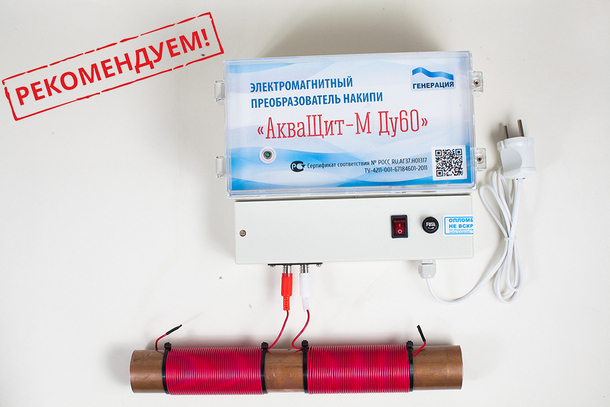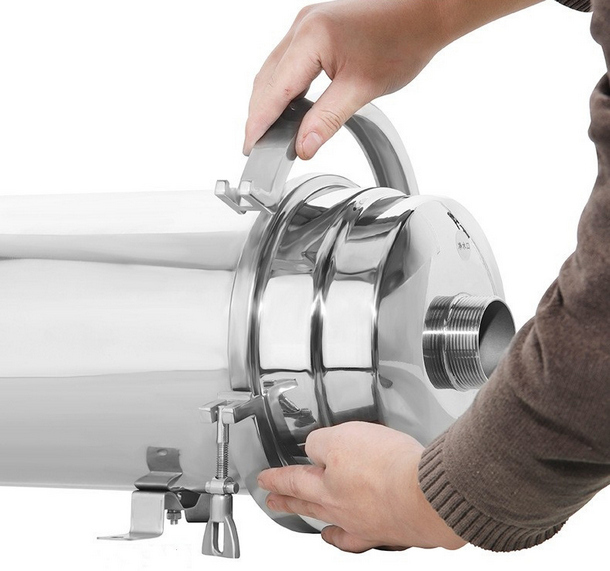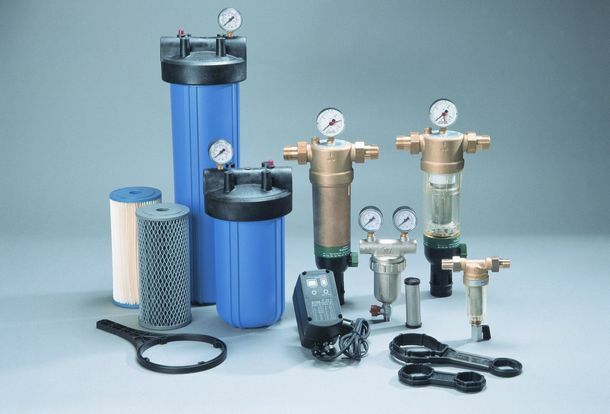Baths made of cast iron are the most expensive among all types of bathtubs. Their high cost is due to a number of advantages. Cast iron has a remarkable property not to be affected by moisture - it practically does not rust and does not rot. At the place of cleavage of the enamel, a protective film is formed, and rust does not extend into the interior of the metal. Its properties for keeping heat are known to everyone. Knowingly, the heating batteries are made from cast iron. Products from it, constantly in an active and aggressive environment - almost eternal.
Contents
- Fine repair and decoration of the cast-iron bath
- Preparation of the machined surface of the cast-iron bath
- Restoration of the cast-iron bath by the method of applying the enamel
- Liquid repair of the cast-iron bath with liquid acrylic
- Repair of the cast iron bath with the plastic liner
But over time, the cast-iron bath loses an attractive appearance. Enamel is not as durable as the base material. The outer coating turns yellow, rusty streaks, chips and scratches may appear. In the workshop, facing a cast-iron bath costs a lot of money and is associated with the dismantling, transportation and subsequent installation. It is a labor-consuming and costly process, which takes a lot of time and effort.

Fine repair and decoration of the cast-iron bath
Depending on the nature of the damages and the condition of the bath, there are several ways of facing the cast-iron bath. Restoring the enamel with liquid acrylic, applying a new layer of enamel at home or installing a plastic tab.
- The chips of the enamel on the side surfaces of the cast iron bath are easily eliminated by cold welding. It is only necessary to clean and degrease the damaged surface and to fix it as plasticine, but in accordance with the instruction. After solidification of cold welding, it can be machined. Sanding, milling or drilling. After grinding, the surface is enameled or decorated with liquid acrylic.
- For individual small cracks or scratches, there are special decorating pencils and polishes of different colors. The scratch is degreased with technical alcohol, if necessary sanded with sandpaper and decorated according to the instructions for the use of the decorating product.
Preparation of the machined surface of the cast-iron bath

The preparation of the surface by the following method is necessary for the restoration of a cast iron bath by any method.
- First, the surface is carefully ground with a grinder or an electric drill with an abrasive nozzle. In this case, you can use a special finely divided grinding powder. It is important not to overdo it and do not make deep depressions. Grinding is performed in a circular motion with light pressure.
- After bringing the entire surface to a perfectly clean condition and eliminating all signs of rust, dust and abrasive residue are washed off with warm and soapy water. The bath is wiped with a soft rag and dried. The entire surface must be treated for a better grip with a new coating.
- The surface is degreased, for this purpose it is possible to use technical alcohol or special means and wipe with a soft lint-free cloth. Try to remove all small villi and motes. The capacity can be treated even with a vacuum cleaner.
Restoration of a cast iron bath by applying the enamel

The enamel for the restoration of a cast iron bath is a two-component preparation consisting of a liquid based on epoxy resins and hardener. It is of different consistency, so determine the method of coating the surface - with a brush or spray.
- Mixing, please follow the instructions on the packaging. It is better to mix a portion for the primary coating to begin with, so that the residue for the second layer of enamelling does not thicken until the bath dries.
- The bath is recommended to warm up before starting work. To do this, dial a full bath of hot water and give time to warm up the metal. Drain the water, wipe dry with a soft cloth. The first layer of enamel is applied by brush or spray. After having passed the time interval according to the instructions, apply a second layer. The service life of the renewed cast-iron bath is from 7 to 9 years.
Liquid repair of cast-iron bath with liquid acrylic

This method appeared relatively recently, thanks to the invention of liquid cold acrylic or stakryla. It also mixes with the hardener and forms a polymer film on the surface.
- An old cast iron bath is prepared in the above way. Damaged areas are cleaned, the entire surface is treated with a grinding machine and degreased. Polymerized acrylic creates a protective film on the surface of the bath with a thickness of 4 to 6 mm.
- The process of acrylic coating is somewhat easier than coating with enamel. Fill, start from the top point and by turning and swinging the bath, distribute it over the surface. Then, the pouring is done from the opposite side, and the procedure continues until a complete and uniform coating of the surface with the stakril. Surplus polymer is removed through the drain hole. The service life of such a bath is not less than 20 years.
Repair of a cast-iron bath with a plastic liner

Now ready to produce plastic tabs for baths. The most important thing is that such a tab should fit the size and match the design of the cast-iron bath.
- The inner surface of the bath is cleaned and degreased in the usual way. Damaged areas are treated with a waterproof sealant. The acrylic liner is adjusted to the drain and overflow holes and is centered. On the surface of the cast-iron bath is applied a two-component assembly foam.
- The insert is inserted into the bath, and the drainage assemblies are mounted. You need to do this quickly, before the foam seizes. After installing the bath, it must be completely filled with water to more tightly press the liner to the base. The perimeter along the edge is treated with a sealant to prevent penetration of moisture, this is the repair of the cast-iron bath completed. After 6 - 8 hours, the bath will be ready for use.


